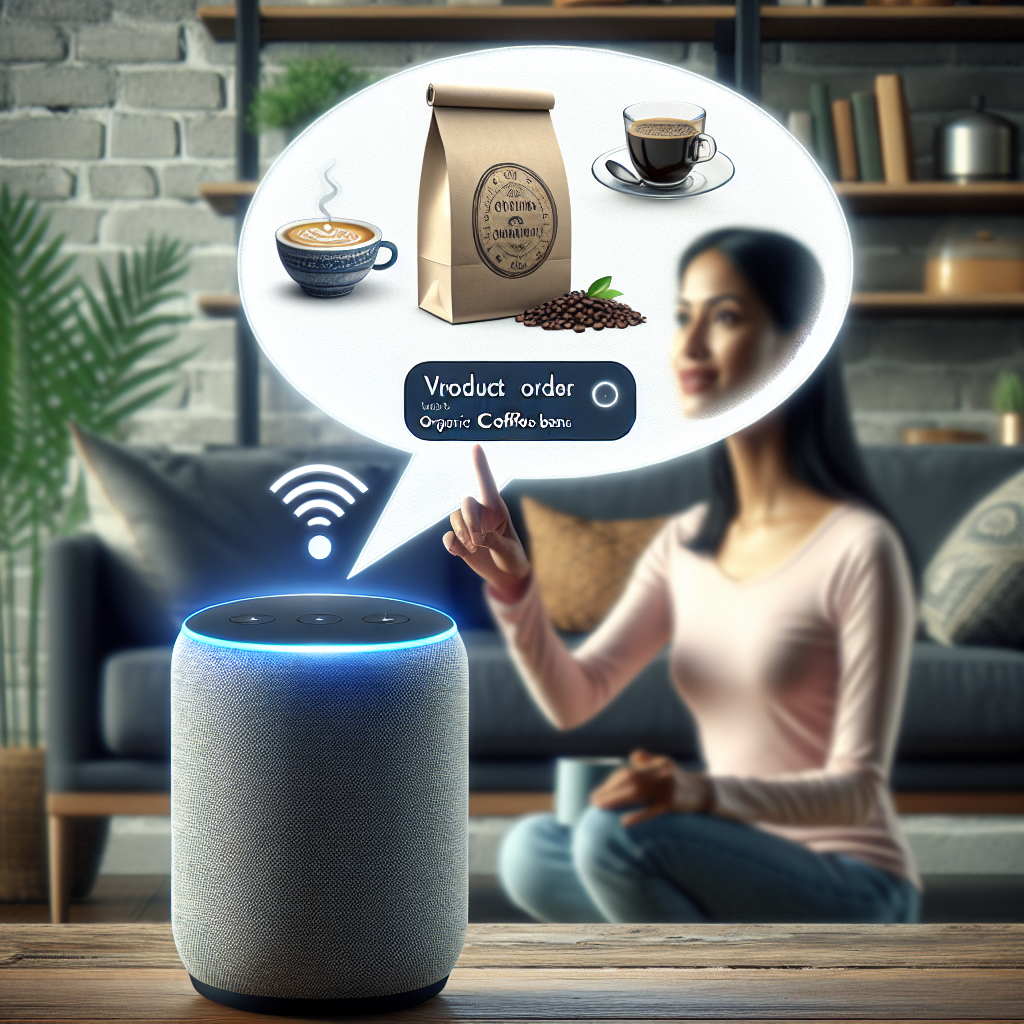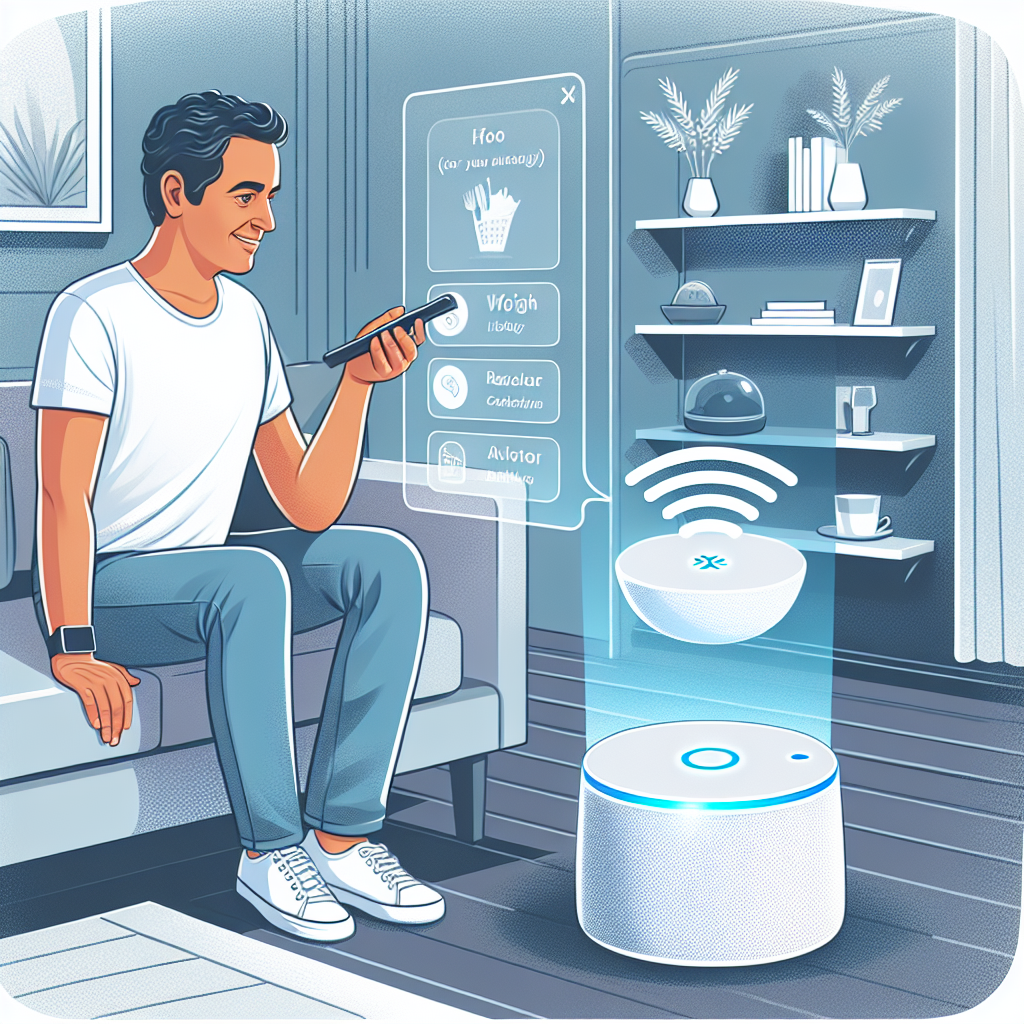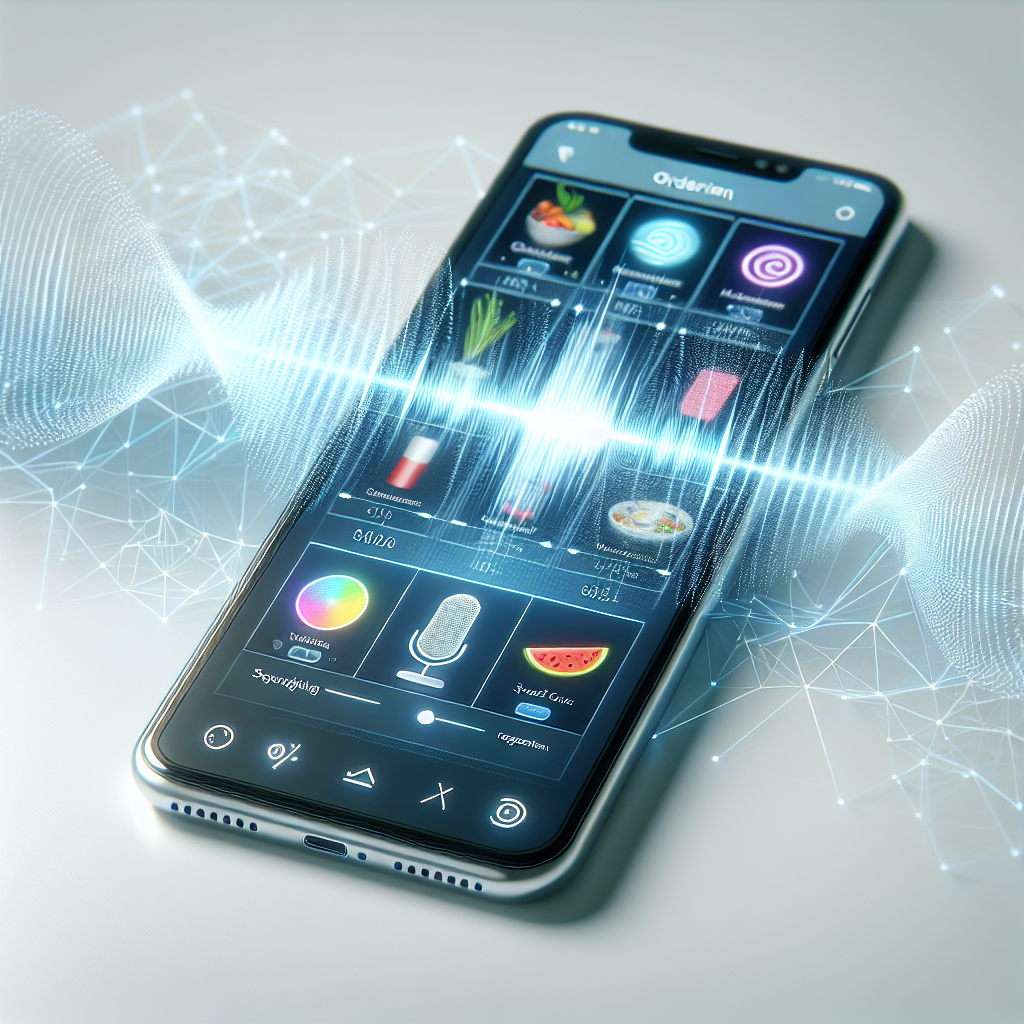
In the rapidly evolving world of digital commerce, voice-activated product ordering has come to the forefront as a key innovation. This technology harnesses the power of voice recognition to make shopping more convenient and personalized than ever before. Particularly, its integration into phone-based systems is revolutionizing the way consumers and businesses interact.
Today, giants like Amazon, Apple, and Google are leading the charge in the implementation of voice-activated commercial activities through their proprietary virtual assistants. These sophisticated systems are designed to understand, learn from, and respond to human voices. For example, with Amazon's Alexa, people can now order a wide range of products simply by speaking to their phones or smart speakers.

According to Gartner, by 2023, people will conduct 30% of their web browsing without a screen, and this is likely thanks to voice-activated technologies. But it's not just about making shopping effortless—it’s about reshaping the retail landscape and opening up new arenas for business opportunities.
Voice-activated commerce represents a powerful, emerging market that is expected to grow exponentially in the future. The trend's potential for transforming phone-based commerce is yet to be fully realized, but the early indicators are certainly promising. It’s clear that in this age of convenience, voice-activated product ordering represents the next major step in the evolution of commerce.
The potential of voice-activated commerce is immense; it could provide businesses with a wealth of customer data, improve accessibility for customers with disabilities, and kickstart a new era of creative and impactful marketing strategies.
To navigate this innovative landscape successfully, it's crucial for businesses to understand the dynamics of voice-activated product ordering. Learning the nuances of this technology now can help businesses connect with customers on a deeper level and stay ahead of the competition in the long run.
Voice-activated ordering is revolutionizing the way people shop, making the purchasing process more convenient, and often, more fun. At its core, the technology relies heavily on advanced Natural Language Processing (NLP) and Machine Learning algorithms to successfully process and execute orders.
Natural Language Processing (NLP) is a transformative technology that enables computers to understand human language as it is spoken or written. With NLP, your voice command goes through various stages such as speech recognition, parsing, semantic interpretation, and command execution. This ensures that the voice-controlled system comprehends the context and meaning behind your order.
If you say, "Order a dozen red roses", for example, the system utilizes NLP to process each word individually and then analyse the collective meaning. Based on this, it will proceed to place an order for twelve red roses from the available options.
In addition to NLP, Machine Learning plays a pivotal role in refining and optimizing the order process. The goal of Machine Learning in this context is to continually improve the system’s recognition and processing of voice commands. The system 'learns' from past interactions, which enhances its capability to predict and fulfil your potential orders. Over time, it becomes more adept at figuring out your preferences, interpreting your commands more accurately, and executing orders more swiftly and efficiently.
By synergizing NLP and Machine Learning, voice-activated ordering is continually enhancing phone-based commerce, delivering a stellar user experience and inciting a significant paradigm shift in the realm of retail and e-commerce.
Advancements in technology continue to transform our everyday lives, especially in the way we shop. The emergence of voice-activated product ordering offers a whole new level of shopping convenience. From boosting efficiency to improving customer experience and offering an enhanced level of accessibility, voice-activated ordering is changing the face of phone-based commerce.

Perhaps one of the most significant advantages of voice-activated ordering is the increase in efficiency it provides. No need to scroll through pages of products or manually input information. Instead, with a simple voice command, shoppers can express their needs, finding and ordering exactly what they want swiftly and accurately. Discover more about the complexities of voice-activated eCommerce here.
Customer experience is another area that stands to gain significantly from voice-activated ordering. It adds an interactive and personalized edge to shopping which eases and improves the purchasing process. With the help of AI assistant that understands language nuances, shopping becomes not just efficient but also simple and engaging.
Let's not forget the offering of accessibility. For individuals with physical limitations, this technology opens up a new world of independence in shopping. Whether they face mobility constraints, sight impairment, or other challenges, they can still make purchases smoothly and conveniently using their voice. Here's a deeper look into how voice technology aids visually impaired.
In conclusion, the advent of voice-activated product ordering is not just a new technological trend. It's a major enhancement to phone-based commerce that offers increased efficiency, an enriched shopping experience, and unprecedented accessibility. It's a remarkable illustration of how technology continues to evolve, making our daily lives more convenient.
As the trend of online commerce continues to burgeon, businesses are continuously seeking innovative methods to enhance customer experience and convenience. Voice-activated product ordering has emerged as a key player in delivering this convenience, and many businesses have successfully implemented this tech-forward approach. The inclusive nature of this technology allows its application in a diverse range of industries, underscoring its versatility and potential.
Domino's Pizza is a prime example of a business that has mastered the use of voice-activated ordering. They introduced "Dom," a virtual ordering assistant, that allows customers to place orders using simple voice commands. This innovation has not only improved accuracy and efficiency of orders but also considerably enhanced customer experience.
Starbucks, another industry giant, introduced the "My Starbucks Barista" feature in their mobile application. Using an AI-based interface, customers can place orders via voice or text, demonstrating the combined power of AI and voice recognition in streamlining product ordering.
Moving beyond the food industry, retail giant Amazon revolutionized e-commerce with their introduction of Alexa, a virtual assistant capable of voice-activated ordering. With Alexa, customers can reorder items, track packages, or even order new products through simple voice commands, making shopping more convenient and user-friendly.
The realm of online banking has also benefited from voice technology. Companies like American Express utilize voice-activated commands to help customers manage their accounts. With their "Amex Skill" for Alexa, their customers can quickly check account balances, review recent charges, or make payments, all through voice commands.
These real-world applications underscore how voice-activated product ordering can enhance phone-based commerce across a broad range of industries. It's more than just a trend; it's shaping up to be a vital component in the world of e-commerce.
As we brace for the rise of voice-activated product ordering, also known as phone-based commerce, we need to consider potential stumbling blocks. Despite the enormous potential of this technology, several factors may hinder its successful implementation. From privacy concerns, technology adoption barriers, to the need for seamless integration with existing commerce platforms, the journey is fraught with complexities.

Foremost among these challenges is privacy. Consumers are increasingly conscious about their data and how it's used. Phone-based commerce requires access to sensitive personal information, which raises alarm. Ensuring that these systems respect user privacy, comply with data protection regulations, and win the trust of customers, is no easy task.
The integration of voice-activated systems with existing commerce platforms presents another hurdle. For small to medium businesses using legacy systems, migrating to voice-activated operations can be a costly and complex process. Technical incompatibility, lack of expertise, and financial constraints could pose substantial barriers to adoption.
A further challenge is user acceptance. Despite steady growth, voice technology adoption has been slower than expected. According to a recent survey, many users remain resistant to using voice tech for product ordering, citing reasons such as lack of accuracy, familiarity, and the potential difficulty of visualizing products.
Addressing these concerns, while concurrently developing effective voice-activated product ordering capabilities, will be key to the growth and ubiquity of phone-based commerce. It presents an exciting yet challenging landscape for businesses to navigate. And as they do, considerations over privacy, seamless integration, and user acceptance will continue to come to the fore.
The landscape of phone-based commerce has evolved significantly in recent years, with a growing trend towards voice-activated commerce. This technology, powered by intuitive and advanced Voice User Interfaces (VUIs), has proven itself a game-changer, reshaping the way consumers interact with businesses digitally.
Leading tech giants Amazon and Google are pioneers in this revolution, offering innovative voice-activated products such as Alexa and Google Assistant. Adopting this advanced technology in commerce effectively eliminates the need for consumers to manually browse and select products, providing an effortless and convenient shopping experience.
Looking into the future of voice-activated commerce, we can anticipate further transformations in the customer-commerce interface. As Artificial Intelligence (AI) and Machine Learning (ML) techniques evolve, we foresee the functionality of VUIs becoming even more sophisticated. With improvements in understanding language nuances, accents, and contexts, voice-activated technologies will become more precise in interpreting and executing orders.
Moreover, personalized shopping experiences will likely become the norm as VUI advancements could tailor product recommendations based on individual user behavior. This will ultimately aid in maximizing customer satisfaction and loyalty, and in turn, boosting business profitability.
Furthermore, a surge in Internet of Things (IoT) applications is projected to strengthen voice-activated commerce. Thousands of smart devices integrated in day-to-day life, from refrigerators to vehicles, could be equipped with voice-activated shopping features. This would mean the ability to order products or services will literally be at the tip of consumers' tongues.
In conclusion, the future of voice-activated commerce beholds exciting innovations that promise to further streamline the customer interaction in commerce. This growing field has the power to revolutionize the way people shop, bringing about tangible benefits in convenience, personalization, and efficiency.
Start your free trial for My AI Front Desk today, it takes minutes to setup!








